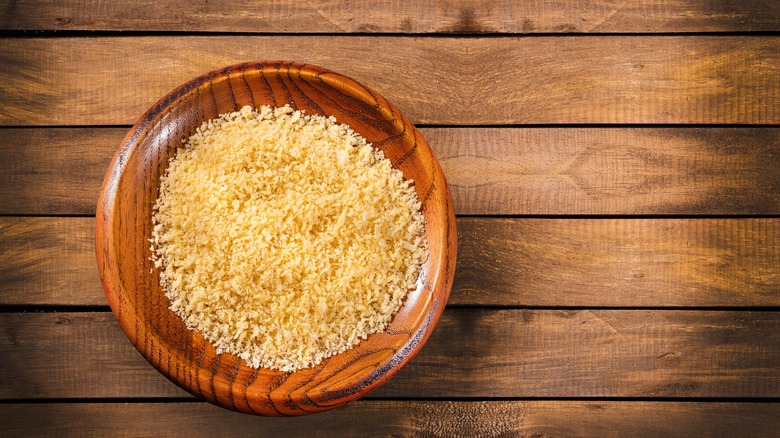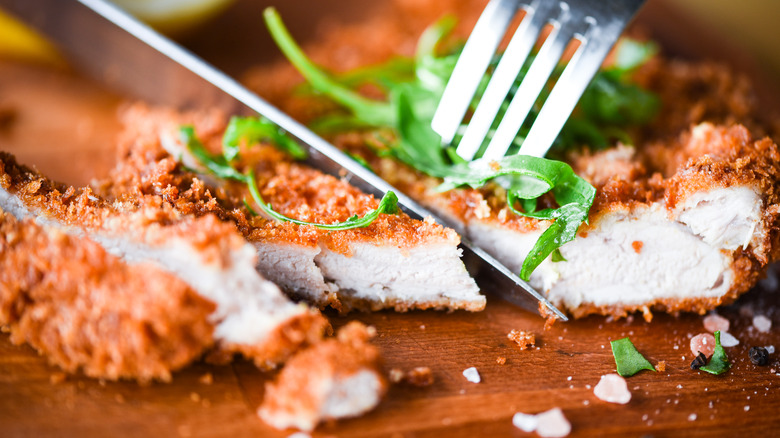What's The Difference Between Panko And Other Breadcrumbs?
Thank you, world, for breadcrumbs. Andrew Zimmern says breadcrumbs "change your food game," and if you ask us, they just make every dish instantly crunchier and tastier. The ingredient is great for fried recipes like chicken Milanese, as well as for crisping up animal or veggie protein, like tofu. You can make homemade meat nuggets with breadcrumbs, build a comforting casserole, and add them when grinding up your favorite type of burger patty. Without question, they are a must-have pantry staple.
Many Asian-inspired recipes include coating and deep-frying as key steps. When reading the ingredients list, you may notice that the recipe calls for one specific type of breadcrumbs: panko. You may have been using breadcrumbs and panko interchangeably in your kitchen, or perhaps you haven't even noticed what type of bready flakes you've been buying. Although both products are used to fry food and add a crispy texture or binding element to meals, they are made from different ingredients, and they offer a different textural sensation to dishes.
Panko and breadcrumbs come from different types of bread
As Allrecipes explains, panko is a Japanese-style breadcrumb that is made from white bread without a crust, while other breadcrumbs are made from several types of crusted bread — from baguette to wheat bread — and can be easily replicated at home with whatever loaf you have on hand. You may find that a lot of breadcrumbs are sold seasoned, while panko remains pure.
Panko originated in Japan during World War II, and the name comes from the word "pan," which means bread, and "ko," which means it is cut into small pieces, explains Upper Crust Enterprises. Historically, these crumbs are made from grinding from pillowy yeasted bread. This is the reason why panko is lighter and flakier than sandy breadcrumbs, and why it tastes more neutral when combined with other foods. Although panko is best known for being used in Asian-style dishes like juicy katsu, many modern recipes use panko in recipes that would traditionally call for breadcrumbs. For example, Bobby Flay uses them as a secret ingredient to improve the texture of things like pasta and salads.
If you're deciding between panko and breadcrumbs for a recipe, think of the final consistency you want. Lighter panko will soak up less frying oil and remain delicately crispy, while sturdier breadcrumbs offer a thicker, crunchier texture. Neither of them will disappoint!

